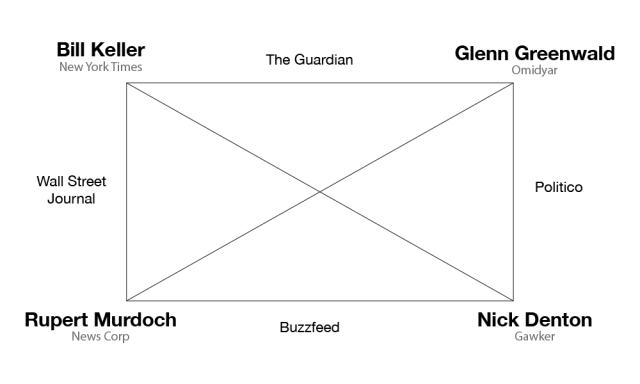One of the eternal refrains/laments/excuses thrown at most forms of social media, perhaps especially Twitter, is that “you can’t have a conversation.” Everyone has heard this and many of us have said this.
Whether it’s because of the character limit, the permeable membrane between public and private, the not-quite-real-time interaction, the fact that Twitter and Facebook are things usually at the edges and not the center of our attention, or any other reason — many, many people are unhappy with social networks as a medium of conversation.
Some of this a pushback against what frankly were and are exaggerated claims about what digital media could do to promote conversation. “Want to join the conversation? Add a comment below!” — as if it were just that easy. As if the fact that the group of people formerly known as the audience had and could immediately transform themselves into something else entirely, just by the sheer fact that they too could write for an audience.
Now, this is not true only of comments or Twitter or other social media, even if they get regularly hammered most as being “bad conversations.” Online forums, where people gang up on and ignore each other. Email, which is both now too formal and too cluttered. Texting runs into some of the same problems as Twitter and email. Skype and other video chats sometimes still seem a little weird, performative, almost uncanny, more like you’re acting in someone else’s home movie (and they in yours) than talking to them. Branch and other startups have tried to figure out a way to engineer a conversational structure, but I don’t think they’ve quite gotten a handle on it.
And obviously, you can take it to its limit: there are some conversations that people refuse to have over the telephone, and that it’s considered right and proper only to do in person.
But let’s stipulate that it is possible to have a technologically mediated conversation of high quality. Because it seems like with some things, we get there. The right Twitter or comment thread. A really good podcast, or TV/radio interview. (Although I think interviews are a little different.) A really good round of instant messaging.
And let’s stipulate that there are sometimes genuine hindrances to these being good media for conversation. Those hindrances may be technical, or conventional, or accidental, but I think they are real and not imaginary. Even if some of us have had and are having what we think of as good conversations in these places, not everyone always feels the same.
What makes these conversations work? I’m tired of people saying “you can’t have a conversation on Twitter” and other people replying “of course you can, dummy.” That pseudo-conversation has played itself out. I would rather try to figure out how, why, and under what conditions meaningful conversation happens.
I want to anatomize conversation. Or rather, I want to anatomize conversations, because they’re not all of one kind, and what counts as a good conversation in one kind of media is probably not a good conversation in a medium with different characteristics, strengths, or weaknesses.
Let’s make this even more ambitious. How can you make a conversation as a media object? I’m asking because I think the reason we circle around conversation is because we really do think that the interchange, exchange, and participation of ideas, the emergence of something new as part of a collaboration between two or more people, has inherent value.
Conversation is something we enjoy doing, we enjoy hearing, we enjoy seeing. And despite our misgivings about new media, conversation is not something old media did well, especially for public consumption.
The 20th century gave us the article, it gave us the debate, it gave us the interview. As McLuhan and Ong and Postman and everybody else told us, convincingly, it transformed oral culture into something new, that print culture and technical media could understand. It gave us the telephone and the radio, but neither of those get us all the way there.
We want something else. We’re dying for something else. It feels like with everything we’ve learned, with everything we now have, that something else is, or should be, within reach. What could get us there?
Five years ago, I wrote a blog post, inspired by a conversation with Robin Sloan, where I called for an “iMovie for conversations.” Now, five years later, inspired by a conversation with Jess Zimmerman, I’m asking again. How can we make this work?


